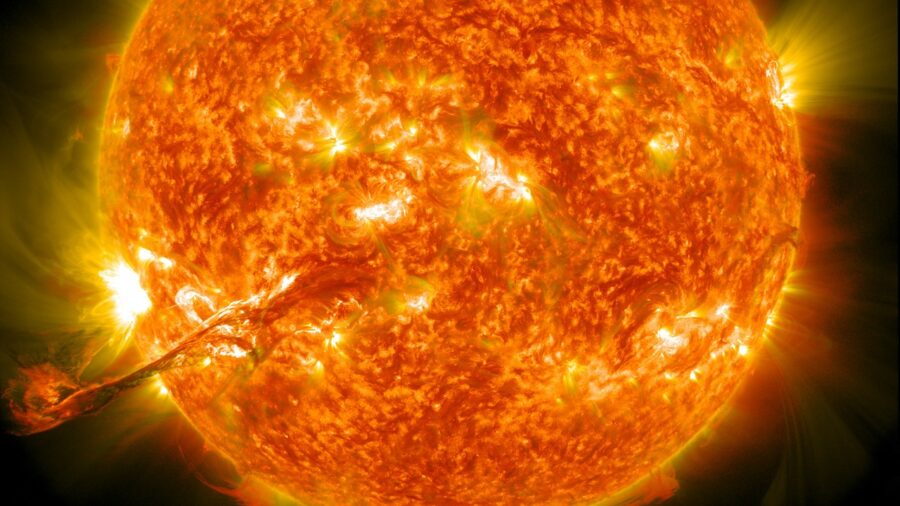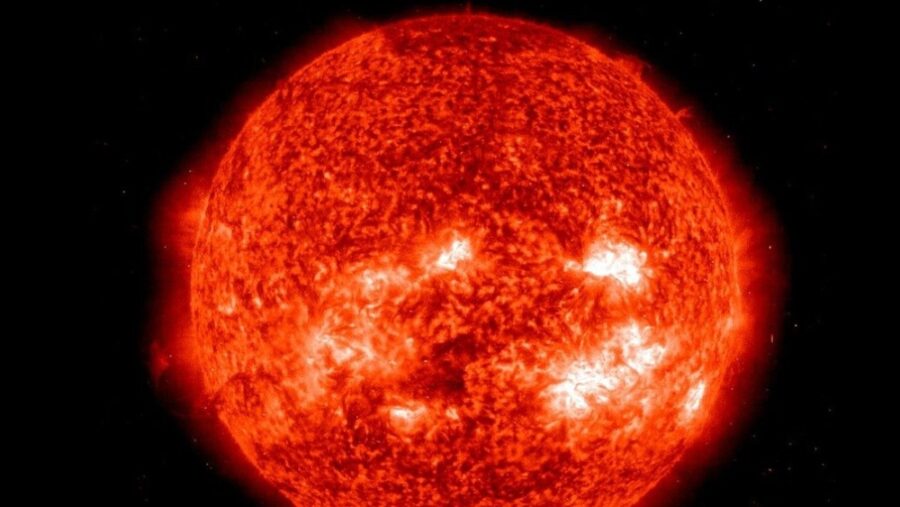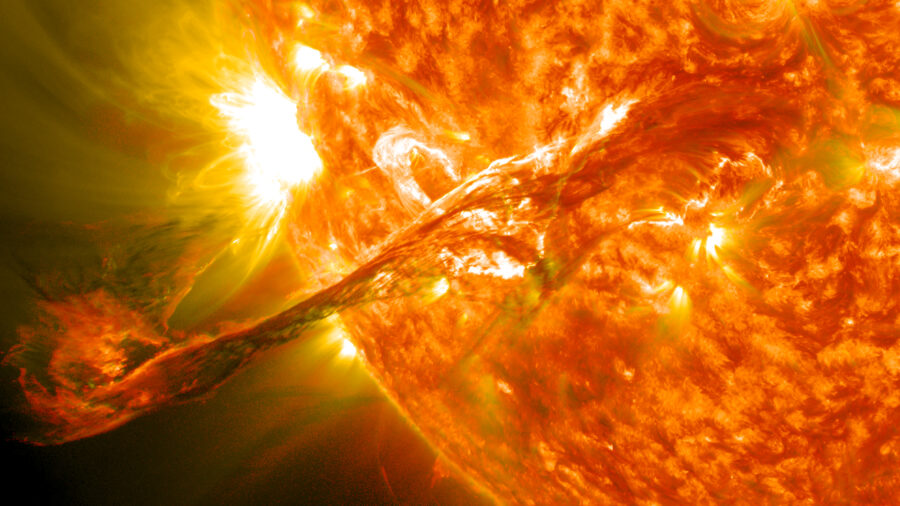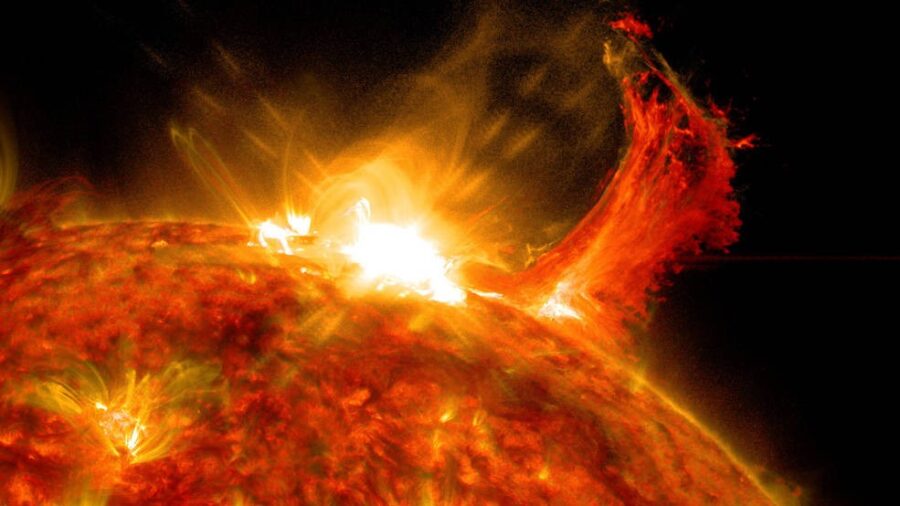Sunspots Hit 20-Year High As Magnetic Field Weakens

New data from the Space Weather Prediction Center shows that there is a 23-year high in the number of sunspots occurring now. Predictions are that the frequency of sunspots will continue to intensify over the coming period. This increase in sunspots is due to a cycle that the Sun goes through during which its magnetic field changes, affecting areas of its surface.
The Sun’s Magnetic Field

A solar cycle lasts about 11 years as the Sun’s magnetic field changes, causing various changes to its observable surface and affecting what scientists refer to as space weather. As the solar cycle progresses, the magnetic field of the Sun weakens, causing areas of the solar surface to cool. We can observe these cooler spots from Earth as sunspots that look like dark spots on the surface of the sun.
The current solar cycle, 25, began in 2019 with a very low number of sunspots. Now, in 2024, we’re experiencing what’s known as solar maximum, meaning that there is the most activity on the surface of the Sun, including sunspots, solar flares, and coronal mass ejections. The size and frequency of these anomalies on the surface of the Sun are at their lowest during what’s known as solar minimum and at their greatest during what’s known as solar maximum.
Solar Maximum

During solar maximum, when most sunspots are visible, the magnetic field of the Sun builds in some areas while decreasing in others and then actually breaks down, shifting a full 180 degrees. During the build-up to solar maximum, areas of the Sun’s surface experience an increase in magnetic pressure, simultaneously causing a drop in surrounding atmospheric pressure and a corresponding drop in temperature. The drop in temperature causes what we see as sunspots.
Reaching The All-Time High

During the month of August, an average of 225.5 sunspots were observed per day on the surface of the Sun. This is the highest average number that has been observed since 2001, when the average number of sunspots in the month of September was 238.2. The peak sunspot count in August was 237, recorded on August 8th, and was still a little below September’s average from 2001.
These numbers indicate that the solar maximum has been reached, but measuring the number of sunspots as activity on the Sun’s surface declines is the only way to confirm that prediction.
Triggers Magnetic Storms

Observing and recording sunspots isn’t just for reference to the solar cycle but also because solar maximum comes with an increase in solar flares and coronal mass ejections as well. Usually occurring between a pair of oppositely charged sunspots, solar flares cause a mass of plasma to be ejected from the Sun’s surface up into the atmosphere. This burst of plasma then bombards Earth with geomagnetic energy and can cause magnetic storms that appear in the form of Northern and Southern lights, as well as interfere with some types of electronics.
Predict Solar Activity To Protect Earth

The National Oceanic and Atmospheric Administration, in conjunction with the National Weather Service, is responsible for monitoring and recording sunspot activity. The joint agency, the Space Weather Prediction Agency, compiles data on sunspots and other activity on the surface of the Sun to predict geomagnetic storms that can affect electronics on Earth. Scientists can use their predictions to protect satellites and other equipment from damage due to the increased magnetic activity caused by solar maximum conditions.
Source: Space Weather Prediction Center











